2019 Preventive Care Virtual Roundtable
Meet the Experts
 |
Narda Robinson, DVM, DO, MS, FAAMA Narda Robinson is a leading authority on scientific integrative medicine. In 1998, Robinson launched Colorado State University’s (CSU) first integrative medicine service and for eight years directed CSU’s Center for Comparative and Integrative Pain Medicine. Robinson now teaches through CuraCore Vet and CuraCore Med as founder and president. Robinson holds a Bachelor of Arts degree from Harvard University/Radcliffe College, a doctorate in osteopathic medicine from the Texas College of Osteopathic Medicine, and a doctorate in veterinary medicine and master’s degree in biomedical sciences from the CSU College of Veterinary Medicine and Biomedical Sciences. She is a fellow within the American Academy of Medical Acupuncture (AAMA). She also serves on the American Board of Medical Acupuncture, the board-certifying organization for physician medical acupuncturists, and the AAMA Board of Directors. |
 |
Julie Miles, DVM Julie Miles graduated from The Ohio State University in 2006. Miles spent two and a half years working in private practice, then joined Lighthouse Veterinary Personnel Services in 2009, where she worked as a relief veterinarian and manager for five years. In 2014, she opened Compassionate Care Animal Hospital, which has grown into a two-doctor practice. Her professional interests include feline medicine, dentistry, and client communications. She and her husband have two boys, Henry and Evan. |
 |
Link Welborn, DVM, DABVP Link Welborn is a diplomate of the American Board of Veterinary Practitioners; certified in canine and feline practice; the owner of five AAHA-accredited hospitals in Tampa, Florida; and an AAHA past president. Welborn has been a member of the AAHA Canine Vaccination Guidelines Task Force since its inception in 2002 and has served as chair since 2010. In additional to his clinical focus, he has a strong interest in practice management and the economics of the veterinary profession. He is president of Veterinary Study Groups, the umbrella organization for the more than 50 Veterinary Management Groups, and is past chair of the American Veterinary Medical Association (AVMA) Veterinary Economics Strategy Committee. Link has received the AVMA President’s Award, the AAHA Practitioner of the Year Award, the University of Florida College of Veterinary Medicine Alumni Achievement Award, the Florida Veterinary Medical Association Veterinarian of the Year Award, and the first AAHA Dedicated Service Award in 2018. |
 |
Jan Bellows, DVM, DAVDC, DABVP (Canine and Feline Specialties) Jan Bellows is in private practice in Weston, Florida. He is a frequent national and international lecturer on topics related to companion animal dentistry. He is a past president of the American Veterinary Dental College and is currently the president of the Foundation for Veterinary Dentistry. He is a coauthor of the 2010, 2013, and 2019 AAHA Dental Guidelines for Dogs and Cats and the author of the books Feline Dentistry (2010) and Small Animal Dental Equipment, Materials and Techniques, Second Edition (2019). |
 |
Dawn Brooks, DVM Dawn Brooks has been an associate at AAHA-accredited Countryside Veterinary Hospital in Chelmsford, Massachusetts, for the past 20 years and chief of staff for the past 6 years. Countryside received the inaugural AAHA-Accredited Practice of the Year Award in 2010 and has been a leader in the New England area for setting high standards for veterinary care. In addition to having a strong focus on pet wellness, she has a passion for teaching her clients about nutrition and how to make healthy diet choices. In 2010, she was honored to be on the panel of authors for the AAHA Nutritional Assessment Guidelines for Dogs and Cats. She lives in Massachusetts and shares her home with three dogs, Miller, Chase, and Shelby; and her cat, Veronica. |
 |
Jinelle A. Webb, DVM, DACVIM (SAIM), DVSc, MSc Jinelle A. Webb obtained board certification with the ACVIM (SAIM) in 2005. She started the internal medicine service at AAHA-accredited Mississauga Oakville Veterinary Emergency Hospital in Oakville, Ontario, where she remains today as medical director and in clinical practice. Webb has continued teaching veterinary students, interns, and residents along with maintaining a role in clinical research, publishing, and lecturing. Webb’s main research interests include investigating the use of laboratory testing and imaging modalities in the detection of occult disease, developing novel approaches to internal medicine procedures, and investigating ways to reduce the invasiveness of procedures. |
 |
Nan Boss, DVM Nan Boss is owner of the AAHA-accredited Best Friends Veterinary Center in Grafton, Wisconsin. She was a member of the 2011 AAHA/AVMA Preventive Healthcare Guidelines Task Force and is the author of Educating Your Clients from A to Z (AAHA Press, 2011). |
 THE DEFINITION OF PREVENTIVE CARE HAS GREATLY EXPANDED in recent years. In the past, preventive care consisted mainly of annual exams and routine vaccinations. But with vast improvements in veterinary medical science, many conditions and diseases can be detected early, treated, and sometimes prevented.
THE DEFINITION OF PREVENTIVE CARE HAS GREATLY EXPANDED in recent years. In the past, preventive care consisted mainly of annual exams and routine vaccinations. But with vast improvements in veterinary medical science, many conditions and diseases can be detected early, treated, and sometimes prevented.
We’ve assembled an esteemed group of consultants, practitioners, and specialists to participate in this virtual roundtable discussion on preventive care.
Similar to our Pain Management Virtual Roundtable in the March 2019 issue, this is a “virtual” roundtable because all our respondents were asked and responded to questions over email instead of gathering in a room together. Responses have been edited for length.

How Do You and Your Team Define Preventive Care?
Narda Robinson, DVM, DO, MS, FAAMA: For the past few years, I have been teaching full time. As such, my “team” consists of a community of my peers, colleagues, and staff spanning the human-veterinary spectrum. Our concept of preventive care tends to have a more expansive reach than most. That is, in addition to promoting annual evaluations, proactive and prophylactic care such as regular dental checkups and interventions, appropriate and responsible vaccinations, client education, and more, we firmly believe that each examination should also include an assessment for pain and any functional, behavioral, or emotional changes.
Furthermore, our preferred pain assessments don’t involve what many learned in school—i.e., forced and frequently uncomfortable passive range-of-motion exams of the neck, limbs, and back. Instead, they focus on gentle yet telling and adept myofascial evaluations. I instruct my students to make it feel like a massage to the extent possible, receiving feedback from the patient about tissue texture, tension, heat, and tenderness. I encourage them to observe how their patients move—at their own pace—and interact with family members. We can glean abundant information just from observing an animal either at home or at the clinic.
We advocate for the (re)introduction of an expanded physical and functional examination into veterinary healthcare. When we assess animals for the early signs of orthopedic and neurologic ailments, we can prevent potentially catastrophic or life-threatening diseases such as spinal cord injury and cranial cruciate ligament disease. While these conditions may themselves not threaten the life of an animal, the cost of surgery as the reflexive recommendation of many practitioners could rapidly outstrip a client’s ability to pay and raise the specter of euthanasia. By identifying musculoskeletal and spinal problems early, we can begin a discussion with clients on how to strengthen the back or limbs, change exercise patterns, and implement an integrative medical or rehabilitation routine that allows the body to recover instead of continue along a pathologic vector.
Julie Miles, DVM: For my team, we define preventive care as any diagnostic test or standard of care that we can use to help identify early disease or risk factors a pet might have for disease. Our ultimate goal is to try to identify disease or risk factors as soon as possible so that we can offer an intervention or treatment when it is more likely to be effective and extend a pet’s life.
Link Welborn, DVM, DABVP: My team and I define preventive care as all of the services and products that have the potential to prevent or detect problems before signs develop that a pet owner might observe. This includes everything from lifestyle vaccinations and comprehensive year-round parasite control to PennHIP screening for hip dysplasia.
 Jan Bellows, DVM, DAVDC, DABVP: Preventive care is anything a client can do to help decrease the plaque accumulation on teeth with the ultimate goal of creating a healthy mouth without odor or disease. This can be accomplished best with twice-daily toothbrushing. Other forms of preventive care include oral wipes, gels, chews, water additives, and diets.
Jan Bellows, DVM, DAVDC, DABVP: Preventive care is anything a client can do to help decrease the plaque accumulation on teeth with the ultimate goal of creating a healthy mouth without odor or disease. This can be accomplished best with twice-daily toothbrushing. Other forms of preventive care include oral wipes, gels, chews, water additives, and diets.
Dawn Brooks, DVM: The process of preventive care includes the steps we take to stay healthy (human or animal), such as specific vaccines to prevent disease, products to help prevent parasitic infections (and possible secondary diseases those insects may carry), or choosing the best diet to support a healthy lifestyle or to prevent or treat disease when possible. The actual preventive care plan should vary based on the needs, and risks, of a particular patient and should aim to minimize risks as much as current technology and medical advances allow.
Jinelle A. Webb, DVM, DACVIM (SAIM), DVSc, MSc: Preventive healthcare is the promotion of a healthy lifestyle and detection of occult disease, which should prompt intervention when indicated, thereby allowing for the healthiest life span possible for a pet. The implementation of preventive healthcare in a practice requires thorough and ongoing communication with the pet’s family and needs to be embraced by all clinic personnel to be successful.
Nan Boss, DVM: Preventive care is all about risk assessment. We ask, “What health risks does this pet have because of its species, age, breed, lifestyle, or conformation?” Then we set about trying to minimize those risks. Think beyond vaccinations and heartworm testing and talk to your clients about DNA testing, preanesthesia ECG screening, stomach tacking, and soft palate resection.
We also need to look ahead and think about what the pet will need in a year or two or three. It takes multiple repetitions of a topic for clients to remember and act on our recommendations. Our goal is to start talking about long-term care needs early on, so by the time the pet needs to have her teeth cleaned or have senior screening done, the pet owner has heard about the service multiple times and is prepared to let us do it. Waiting to talk about periodontal disease until the teeth are already infected is reactive instead of proactive.
Why Should Practices Value Preventive Care?
NR: The type of preventive care that a bond-centered, patient-focused practice builds engenders lifelong relationships with families, including their animal(s). This leads to a higher quality of care that invites opportunities for dialogue with clients about any behavioral or physical problems that might be popping up or changes in the household about which one or more family members are concerned.
In this way, the veterinarian becomes acquainted with the social fabric in which the animal is living, opening avenues for instituting preventive care by removing emotional, environmental, physical, and other stressors that could lead to disease, destructive outcomes, and possibly the death of the animal.
J M: I think the most important reason is that most clients really want to know the information that preventive care is able to provide. They want to know that their pet is healthy and what they can do to keep them healthy. Our clients are constantly searching for the best diet, the best supplement, the next best thing to keep their pets healthy. Why would we not offer something that can make such a big difference in the long-term health of their pet? One of the biggest things that struck me when we started implementing our preventive care program was how thankful so many of clients were that we were offering preventive care bloodwork. As pets become more and more important in our lives and our families, our clients want to know that they are doing everything they can to keep their pets healthy. When we start to have conversations with clients about monitoring their pet’s health more closely and what that means, they are thrilled that they can have concrete information about their pet’s health. Being able to provide this helps bond the kind of clients we want to our practice, and that is a huge value to the overall health of our practice.
M: I think the most important reason is that most clients really want to know the information that preventive care is able to provide. They want to know that their pet is healthy and what they can do to keep them healthy. Our clients are constantly searching for the best diet, the best supplement, the next best thing to keep their pets healthy. Why would we not offer something that can make such a big difference in the long-term health of their pet? One of the biggest things that struck me when we started implementing our preventive care program was how thankful so many of clients were that we were offering preventive care bloodwork. As pets become more and more important in our lives and our families, our clients want to know that they are doing everything they can to keep their pets healthy. When we start to have conversations with clients about monitoring their pet’s health more closely and what that means, they are thrilled that they can have concrete information about their pet’s health. Being able to provide this helps bond the kind of clients we want to our practice, and that is a huge value to the overall health of our practice.
LW: Preventive care provides win-win benefits with healthier pets, happier pet parents, and a less stressful practice workplace. It is also a good investment for the clients of practices relative to the cost of treating illness that can be prevented entirely or at least minimized through intervening after early detection.
JB: It’s the right thing to do. We spend a good portion of our day caring for disease. It would be much better for all parties (the client, the patient, and the hospital) to prevent disease—less pain and greater patient and client appreciation.
DB: Our priority should always focus on wellness; extending the life expectancy and quality of life of our patients has immeasurable benefits for both them and their family. Preventive vaccinations can reduce the risk of long-term health concerns, such as Lyme disease (which is common in our area). Preventive dental care can help avoid progressive periodontal disease, which presents a risk to the pet’s overall health and to their quality of life. Regular blood screens can help us identify health issues early, when intervention may be more useful and less involved for the client. We can do so much more to help our patients if we are being proactive versus reactive.
 JAW: There is evidence that preventive healthcare, when implemented in a careful and thoughtful manner and tailored to each pet, can improve quality and length of life. Most clients are willing to pursue preventive healthcare practices if they are educated about the goal. Committing a practice to implementation of quality preventive medicine shows clients that the practice is concerned about all aspects of their pet’s health, ensuring that their healthy longevity is the top priority. Although there is financial commitment required by clients in pursuing preventive healthcare, it may reduce costs in the future by delaying or preventing disease processes.
JAW: There is evidence that preventive healthcare, when implemented in a careful and thoughtful manner and tailored to each pet, can improve quality and length of life. Most clients are willing to pursue preventive healthcare practices if they are educated about the goal. Committing a practice to implementation of quality preventive medicine shows clients that the practice is concerned about all aspects of their pet’s health, ensuring that their healthy longevity is the top priority. Although there is financial commitment required by clients in pursuing preventive healthcare, it may reduce costs in the future by delaying or preventing disease processes.
NB: What are we here for if not to help our patients lead longer, healthier lives? Just because veterinary school is taught entirely from a disease treatment perspective instead of a prevention one doesn’t mean we have to spend our careers with that point of view. I love surgery and would happily spend all day in the surgery room, but I figured out pretty early in my career that I could save far more lives by teaching my clients about weight management than with my brilliant, life-saving splenectomy technique.
Prevention not only is better medicine but also brings a lot of money into my practice. From a business standpoint, it’s one of the smartest things you can do. More than 20% of my practice income is from laboratory testing. Every test you do that catches a disease process early is an opportunity to deliver additional services to that patient. I would much rather make money on disease treatment and monitoring than on euthanasia and cremation!
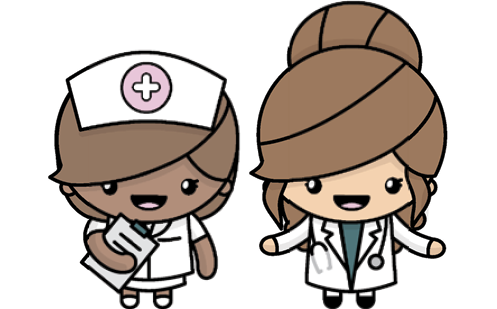 How Has the Realm of Preventive Care Evolved Since You Have Been in Practice?
How Has the Realm of Preventive Care Evolved Since You Have Been in Practice?
NR: The growing presence of integrative medicine and rehabilitation has changed the nature and outlook of veterinary medicine in a number of ways. While some integrative medicine and rehabilitation practitioners are limiting their scope to postsurgical management, an increasing number of forward-thinking veterinarians are questioning the need for surgery for conditions such as intervertebral disk disease and cranial cruciate ligament injury, seeing how well many patients do without invasive approaches. As such, we recognize the need for a careful physical assessment that identifies changes in muscle tone, function, and comfort as well as neurologic engagement as an added component of preventive veterinary care. There’s much more to the prevention and treatment of disease than we learned in school, and my personal belief is that veterinary schools should update their curricula to present more nonsurgical, science-based, integrative, and rehabilitative methods in orthopedic, neurologic, and primary care courses.
JM: When I first graduated 13 years ago, there wasn’t much discussion about preventive care bloodwork. We were doing a good job of recommending annual heartworm testing and offering presurgical bloodwork if a client wanted it, but I don’t remember discussing the importance of checking bloodwork annually. Presurgical ECGs were not standard for most clinics, and I think that we are starting to recognize that they can be a powerful tool to screen for patients who might be at risk for anesthesia.
LW: When I entered practice more than 35 years ago, preventive care was limited to a daily heartworm preventive and what we now refer to as core vaccinations. Preventive care today is much more effective and comprehensive. Even so, decades from now, we will surely look back and marvel at the advances in preventive care when compared with our capabilities today.
JB: Preventive care was virtually unheard of when I graduated veterinary school in 1975. Since the establishment of the Veterinary Oral Health Council in 1997, preventive oral products that are accepted by the council can be trusted when used as directed to help decrease the accumulation of plaque and tartar.
DB: So much more is available to us—better vaccines, more thorough point-of-care testing, improved quality of therapeutic diets—that we have the tools and resources to better help our clients. Even more important, there has been a shift in the consumer’s perspective—our clients want the best preventive care possible and are willing to take and implement our recommendations. In my first decade of practice, we had to work hard to explain the importance of year-round heartworm prevention, educate our clients as to the dangers of leptospirosis and Lyme disease so they would trust us to add these vaccines to their pet’s preventive care routine, and beg for fecal samples for parasite screening. While we do have many of these challenges ongoing in our practice, we have many more pet parents who are expecting these recommendations, and our level of compliance has improved dramatically.
JAW: Historically, routine healthcare appointments were dictated by need for vaccination, with less emphasis placed on the overall health of a pet and the detection of occult disease. With a larger proportion of pets being kept in more protective environments, and increased attention prioritized to the clinical status of an outwardly healthy pet, our pets are living longer lives. Maintaining a high quality of life in the aging pet population requires attention to subtle changes in health and the potential for utilization of screening tests to detect occult processes.
 NB: I certainly see more wellness testing being done than when I was first in practice, but I think most practices could be doing much more. I had to write all my own client education materials on preventive care topics because there was so little available, and that hasn’t changed all that much. We still tend to approach practice from a treat-a-disease standpoint instead of a prevent-and-treat-early standpoint.
NB: I certainly see more wellness testing being done than when I was first in practice, but I think most practices could be doing much more. I had to write all my own client education materials on preventive care topics because there was so little available, and that hasn’t changed all that much. We still tend to approach practice from a treat-a-disease standpoint instead of a prevent-and-treat-early standpoint.
DNA test panels are available that screen for 150 different canine genetic diseases, but I’ve never had records faxed to me from another practice where this testing has been done. I don’t even see Wisdom panels, MDR-1, or von Willebrand disease DNA testing being done by other veterinarians. I’ve never had a Great Dane owner come to me whose previous veterinarian talked to them about GDV and stomach tacking. Even basic things like Bordetella vaccination and annual stool testing are being missed. Though more is available for us to utilize for better patient care, I don’t feel like we are doing a good job of taking advantage of it.
What Has Led to the Increased Awareness of the Importance of Preventive Healthcare in Veterinary Medicine?
LW: To a large extent, financial incentives have driven the increased awareness of the importance of preventive healthcare in veterinary medicine. Veterinary pharmaceutical and pet nutrition companies increase their earnings by developing new preventive care products, practices benefit financially as well since providing preventive care is so much more efficient than caring for preventable illnesses, and consumers of veterinary products save money by preventing expensive healthcare problems.
JB: Clients desire methods to keep their dogs and cats healthy, but they really desire sweet-smelling breaths. Prevention of plaque and tartar becomes one of the most important proactive duties a loving pet owner can do to help their pet live a great life.
 DB: I believe this shift is due, in large part, to the mission of our profession to educate our clients and provide the best medicine possible to our patients. We now see the next generation of our patron families coming to us expecting a level of medicine their families have been actively participating in for the past 10–15 years. Our younger clients are savvy and seeking information from many outlets when obtaining a pet and are hearing over and over that preventive medicine is important. Our message is not only being heard, it is drowning out older information floating around that vaccines pose health risks or that heartworm preventives will make your pet sick. Thankfully, our collective voices are changing the paradigm of preventive care, and our clientele is ready for us to offer the next best thing to help their pets stay healthy.
DB: I believe this shift is due, in large part, to the mission of our profession to educate our clients and provide the best medicine possible to our patients. We now see the next generation of our patron families coming to us expecting a level of medicine their families have been actively participating in for the past 10–15 years. Our younger clients are savvy and seeking information from many outlets when obtaining a pet and are hearing over and over that preventive medicine is important. Our message is not only being heard, it is drowning out older information floating around that vaccines pose health risks or that heartworm preventives will make your pet sick. Thankfully, our collective voices are changing the paradigm of preventive care, and our clientele is ready for us to offer the next best thing to help their pets stay healthy.
JAW: Preventive healthcare is an expanding field in both human and veterinary medicine. People have exposure to increasing education regarding the importance of preventive medicine for themselves and their family, and this extends to their pets. There is an increased awareness that maintaining the health of a family pet involves much more than a yearly vaccine appointment and heartworm/flea/tick prophylaxis.
NB: There has always been a trickle of articles and lectures on wellness and prevention in veterinary magazines and journals, including Trends. There is also more wellness being taught in veterinary schools than there used to be, but there are still a lot of internists who insist that there is no value in wellness screening. Corporations like Banfield have also been drivers in wellness care. AAHA’s standards are wonderful for accredited hospitals, but that doesn’t extend to the thousands of practices that are not accredited. It’s been slow going. I wish I had access to statistics on wellness and prevention 30 years ago compared with today. There has probably been more progress than I know.
To some extent, the clients have been driving veterinarians to step up their game by asking for better preventive care. I had a new client come in two weeks ago with a soft-coated wheaten terrier. Soft-coated wheaten terriers are prone to glomerulonephropathy, which is diagnosed with a urine protein test. I was pretty happy to see that blood testing and urine screening had been done by the client’s previous veterinarian. I almost never see that. Most of our new patients need vaccines that the previous veterinarian didn’t recommend; Lyme disease, leptospirosis, and Bordetella often have never even been discussed with clients. I don’t see nutritional recommendations or dental grading, and stool tests often are not current either. So much lost income as well as health consequences for all those pets!
I think one of the things that holds us back is how veterinary conferences are structured. As with veterinary school educations, the tracks at meetings are all disease or problem based, taught by the same specialists who teach in the schools. There is no wellness track. Wellness is relegated to the management track. Most DVMs spend more than 90% of their CE in medicine, not management.
Unlike in a disease-based system, where you can learn about a new drug or technique and implement it on your own, for a wellness program you need client education, team training, and project management. You also have to get buy-in from the practice owner(s). You can’t really sell the heck out of senior screens on your own while your boss doesn’t do the same. A lot of new graduates come out expecting to be able to do more preventive care but are squelched by the environments they find themselves in once in practice.
 What Challenges Do You Face in Implementing Preventive Care with Your Team? With Your Clients?
What Challenges Do You Face in Implementing Preventive Care with Your Team? With Your Clients?
NR: The main challenge in implementing the type of preventive veterinary care that our science-based integrative medical and rehabilitation programs advocate is education—teaching clients, support staff, veterinarians, veterinary students, and veterinary school faculty how to find and address somatic and visceral maladaptations early and safely, incorporating rational and evidence-informed integrative medicine as first-line care.
JM: For my clinic, getting each staff member to have the discussion with each client every time they come in for an annual wellness exam is the most important piece of our success, and it is our biggest challenge. Some days it is much easier than others. Constantly reminding our staff how important it is that we talk about it every time is key. We have checklists to remind staff to have the discussion with clients. We have an incentive program that rewards staff when we reach certain goals. We discuss cases with abnormal findings and celebrate when we can intervene in a pet’s life and make a significant difference in the outcome of their disease. For clients, I really focus on educating them about the importance of preventive care, and I take the attitude that this is a long-term educational campaign. I don’t expect every client to say yes; in fact, I expect most to say no initially. But my goal is to have the conversation every time, offer handouts every time, and eventually they will get to yes. If we start talking to a pet owner at that first annual appointment when their pet is one year old, then hopefully they will have heard the message enough to realize that this is important by the time the pet is three or four. So again, the challenge is to have the conversation every visit, every year.
 LW: Comprehensive preventive care is wonderful, but it can be complicated and confusing for practice team members to understand and communicate to pet owners. The Law of Initiative Fatigue states that when the number of initiatives increases while time, resources, and emotional energy are constant, then each new initiative—no matter how well conceived or well intentioned—will receive fewer minutes, dollars, and ounces of emotional energy than its predecessors. With a dizzying array of preventive care products and services being advanced by companies, initiative fatigue is a real problem within many practices.
LW: Comprehensive preventive care is wonderful, but it can be complicated and confusing for practice team members to understand and communicate to pet owners. The Law of Initiative Fatigue states that when the number of initiatives increases while time, resources, and emotional energy are constant, then each new initiative—no matter how well conceived or well intentioned—will receive fewer minutes, dollars, and ounces of emotional energy than its predecessors. With a dizzying array of preventive care products and services being advanced by companies, initiative fatigue is a real problem within many practices.
Time and money are the biggest challenges we face in implementing preventive care protocols today. Everyone is busy with lots of distractions, which makes breaking through to communicate the importance of preventive care difficult at times. Consumers appropriately expect a high level of value as well. Perception of value can be influenced by conflicting messages from outside the practice.
DB: Our practice mantra is to “do what is best for the pet.” If we believe that we are making recommendations that are at the highest level we can offer our pets, our team members have the confidence to say to our clients, “Yes, this is the best.” However, as with most practices, cost is always a monumental factor in whether a client takes our recommendations. We do our best to educate our clientele, make these same recommendations at each and every visit, and provide concrete and tangible reasons as to why these recommendations will benefit their pets. Persistence and consistent messaging are important for the client to feel that we really believe in what we are doing, that it is worth the cost, and when it is not economically feasible for someone, we will find a way to tailor what that client can afford to do for that pet at that moment.
JAW: Preventive healthcare requires a proactive approach from all team members and a unified communication system for clinic protocols. Methods for the detection of occult disease can be perceived both by clients and veterinary team members as having a financial motive for the clinic rather than the goal of improving pet health. Support can be found by directing clients and veterinary team members to the increasing information available detailing the benefits of a proactive approach to pet health, both through the veterinary scientific literature and through many other forms of education, such as informative websites and literature written specifically for pet owners.
NB: Patience, positive reinforcement, and actively managing the changes you are trying to make will get you where you want to go. It’s always tough to make changes. It’s human nature to resist doing things a new way. The emphasis always should be on how the change will benefit the patients. Our team members don’t go into veterinary medicine to get rich; they are here because they love the animals we see every day. Focus on that and how your changes will help your patients lead longer or healthier lives. My team members are proud of what we do and the fact that we provide better care than our neighboring clinics.
 What Are Some Actions That Veterinary Practices Can Take Right Now to Bolster Their Preventive Care Services?
What Are Some Actions That Veterinary Practices Can Take Right Now to Bolster Their Preventive Care Services?
NR: Learn or relearn the art of the physical evaluation, complete with a myofascial examination that informs the practitioner about the general state of wellbeing of the animal and highlights areas of somatic or visceral dysfunction that warrant further inspection, whether through imaging, bloodwork, more tailored analyses, etc.
JM: As the sole owner in my practice, I get very overwhelmed with creating the protocols and getting things off the ground any time I want to implement something new. For many of us, starting a new program is so stressful, but my biggest piece of advice is to pick one thing that you want to focus on and build from that. If you aren’t already requiring presurgical bloodwork for all surgeries, start there or with requiring annual heartworm testing. Once you get your clients and staff to accept that these things are important, then layer in more things. If you already do those things, consider adding in presurgical ECGs or offering annual preventive bloodwork. For me, the hardest part is getting codes set up in my practice management system and setting prices. Getting clients to agree to preventive care services is actually the easy part, as most of them are glad we offer these services to keep their pets as healthy as possible.
LW: Practice leaders can help team members and pet owners understand how to prioritize preventive care and create clear messages for both of these groups. This is made more challenging by the reality that these priorities can vary from one pet to another.
JB: (1) Stress oral prevention during the twice-a-year wellness visits, (2) show clients how to either brush their pet’s teeth or use cotton swabs or wipes to decrease daily plaque accumulation, and (3) schedule monthly or quarterly no-fee dental progress visits to monitor how clients are doing in controlling plaque and tartar.
DB: My recommendation is to reach for the current industry standards—where the message you give your clients will be the message they hear if they visit another practice down the street (year-round heartworm prevention, year-round tick prevention, annual fecal parasite screening, and preventive nutrition choices such as low-calorie food choices for weight management). Teach your team to provide a consistent message, from the minute your client care specialists book the appointment to the appointment itself, when veterinary technicians reinforce those messages before and after your time with the client, etc. Pick one or two ways you can improve your level of recommendations, and believe in those choices, that they are important, that they will have a beneficial impact for that pet, and that you can make those recommendations to each pet at every visit.
JAW: Depending on the clinic’s current preventive medicine protocols, it can be as simple as shifting the goal of annual examinations from vaccination and flea/tick/heartworm testing and prophylaxis to the evaluation of the overall health of a pet. Practices can start with basic written protocols that ensure that all team members are educated in how to assess the health of a pet and how to effectively communicate the importance of preventive medicine with pet owners. Having educational material available in the waiting area and exam room can encourage an open dialogue between the pet owner and all team members.
NB: Be consistent. We should be talking to every client at every wellness visit about the topics we feel are important for their pets’ health as well as sending every pet owner home with good written materials. The more haphazard or random we are with recommendations and compliance, the fewer patients will be helped. A patient should never receive a greater or lesser level of care simply because one doctor saw them and not another or because we had a busier or slower appointment schedule that day. Preload educational materials into every patient file and use them consistently.
What Role Does X Play in Preventive Care?
 X = Complementary Medicine
X = Complementary Medicine
NR: Complementary (now more commonly referred to as “integrative”) medicine can be highly effective when instituted early. All too often, conventional practitioners have waited until “nothing more can be done” to refer for medical acupuncture, massage, photomedicine, or rehabilitation, when the disease has progressed to a less readily reversible state. I understand why some veterinarians would be reluctant to refer to integrative medical providers if they are concerned about the latter practicing “woowoo.” However, the only types of integrative approaches I advocate and practice are based on sound, scientific mechanisms of action and evidence of safety and effectiveness.
 X = Business Strategy
X = Business Strategy
JM: Offering preventive care is an excellent way to increase your clinic revenue, but the best thing about it is that it drives business from services that really help benefit our patients. When we identify a significant abnormality on preventive care screening, it almost always drives further diagnostics and treatments. Sometimes, that is just rechecking bloodwork in one to two months to see if the change is a trending in a certain direction or resolving, and other times it leads to additional lab work, radiographs, ultrasounds, etc. All of it drives revenue, but to me it is the best revenue we can generate, as it leads to diagnosing and treating disease and hopefully ultimately extends the length and quality of a pet’s life.
 X = Vaccinations
X = Vaccinations
LW: In many ways, vaccinations are the cornerstone of preventive care. William Foege, MD, MPH, former director of the Centers for Disease Control and Prevention and the person credited with devising the global strategy that led to the eradication of smallpox, has rightly described vaccines as “the tugboats of preventive health” in that vaccinations maneuver the immune system to achieve disease protection. This is just as true for pets as it is for people.
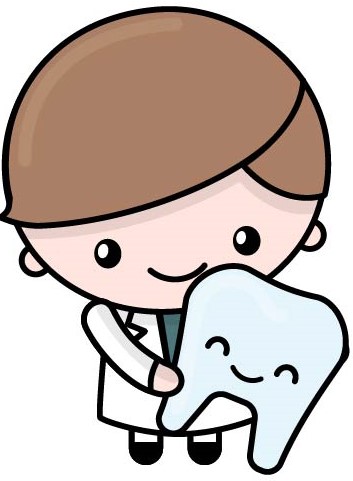 X = Dental Care
X = Dental Care
JB: Within a few days, plaque hardens to tartar, which creates a rough surface for more plaque to accumulate, often leading to gingivitis and periodontal disease. Starting with a clean mouth is most helpful to decrease the accumulation of plaque. Extracting mobile teeth and teeth affected with advanced periodontal disease before urging preventive care is highly recommended.
 X = Nutrition and Weight Management
X = Nutrition and Weight Management
DB: Here comes my soapbox! Think about our choices as people; we choose fast food, fried food, and high-calorie desserts, and as a result, we are plagued by high blood pressure, high cholesterol levels, weight problems, and diabetes! If we could have a personal chef, wouldn’t we all eat better and be healthier as a result? We wouldn’t end up buying the junkiest food at the grocery store or struggling to make a healthy meal after a long day of juggling work and family; we would be presented with a delicious, healthy meal that we would enjoy thoroughly and—voila—we could stay on track! Now think about your pet; if we could be that personal chef for them and provide them with a yummy, healthy food, and a healthy portion, why wouldn’t we want to? Weight problems are at the root of many evils in pets, and if we do not teach our clients that they control what goes in their pet and how those choices will affect their longevity and, more importantly, their quality of life someday, we are missing a huge opportunity to help our patients.
 X = AAHA’s Guidelines
X = AAHA’s Guidelines
JAW: Many veterinary clinics do not have a formal system for implementation of preventive care into their practice. The AAHA guidelines are a wealth of information that aid in the formation of, or expansion of, a clinic preventive medicine policy. They are an excellent educational resource for the entire veterinary team regardless of their level of knowledge in the field of preventive medicine.
If You Could Wave a Magic Wand and Get 100% Compliance from Your Clients on One Area of Preventive Care, What Would It Be, and Why?
NR: Learn about science-based integrative medicine and find a practitioner who knows how to fully examine an animal without causing pain or fear so that they can identify problems early and offer you a full spectrum of treatment options, including those that are nonsurgical or noninvasive when appropriate.
LW: In some areas there is a tendency to take rabies vaccination and disease control for granted, but last year we had nine cases of feline rabies in the county in which I practice, and worldwide an estimated 100 children die from rabies each day. Accordingly, I would wave a magic wand to achieve 100% compliance with rabies vaccination.
JB: Only use Veterinary Oral Health Council–accepted products because they have evidence-based proven efficacy.
DB: Nutrition! In today’s day and age, with the overabundance of marketing and poor quality control in the pet food industry, having my clients choose a food that has been designed under the oversight of board-certified veterinary nutritionists is my biggest win. Good nutrition is the foundation for a long and healthy life.
JAW: I would love to see 100% of clients embrace the concept of preventive care; therefore the area where I would love to see 100% compliance is in entering a preventive medicine program. I find that the biggest hurdle to implementing effective preventive healthcare within a veterinary clinic is getting past a client’s skepticism of the motives for the evaluation of their healthy pet. Compared with earning your client’s trust that the goal of preventive healthcare is truly to improve healthy longevity in their pet, developing and implementing the protocols needed is easy.
NB: Dentistry, though most of what we do for dental health is more treatment than prevention. There is nothing sadder than sending a pet home with infected teeth while knowing the client will never let us take care of the problem. It’s like sending the pet home dragging a broken leg behind them that the owner refuses to fix. Dental disease is painful, debilitating, and life shortening. If we could clean every pet’s teeth before periodontal disease sets in and take care of every cat’s tooth resorption as soon as we recognize it, our patients’ lives would be so much better.
10 Additional Ways to Boost Preventive Care Compliance
Packed with credible, expert advice, the Preventive Care Brochure set reinforces your recommendations on common preventive care topics.
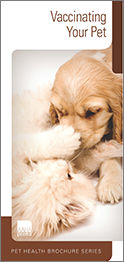 |
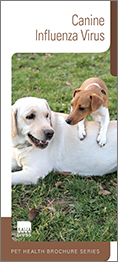 |
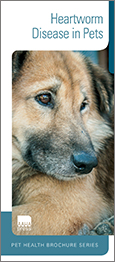 |
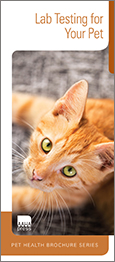 |
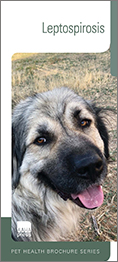 |
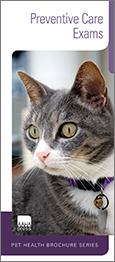 |
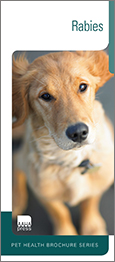 |
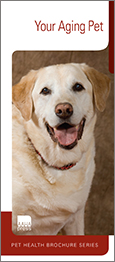 |
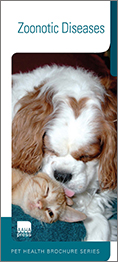 |
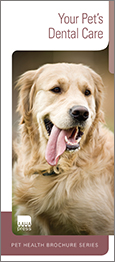 |
Ready for more? Subscribe now!
Photo credits: ©iStock.com/bortonia, ©iStock.ApoevAndrey, ©iStock.com/Sudowoodo, ©iStock.ApoevAndrey, ©iStock.com/ApoevAndrey, ©iStock.com/Sudowoodo, ©iStock.com/Enis Aksoy, ©iStock.com/Sudowoodo, ©iStock.com/ApoevAndrey, ©iStock.com/ApoevAndrey, ©iStock.com/Sudowoodo, ©iStock.com/Chayapoll Tummakorn, ©iStock.com/ApoevAndrey, ©iStock.com/Sudowoodo,



